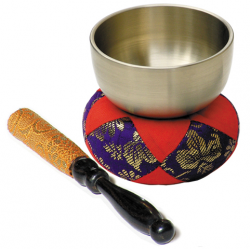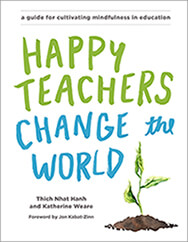Mindfulness Born Peace and Happiness (MBPH): A Way of Well-Being
Mindfulness Teachers (mTeachers) Training Program
August 2017 – July 2018
Frequently Asked Questions
Updated July 9, 2017
Dear friends,
Thanks for your interested in the mTeachers Training program, please see answers to frequently asked questions (FAQs) about the program.
- Why does the program last one-year, instead of a shorter period, for example, 3 months?
- I am very busy and don't have two hours to practice mindfulness a day as required by the program. How do I deal with it?
- There is no Sangha in where I live, how can I practice as a Sangha?
- Is this program open to people not living in Hong Kong?
- What does "Mindfulness Born Peace and Happiness: A Way of Well-Being" mean?
- What are the foundations of the MBPH program?
- What books are used as references?
- When and how was this MBPH training program formed?
- How does the training format work?
1. Why does the program last one-year, instead of a shorter period, for example, 3 months
Mindfulness is a way of life. It takes time for mindfulness teachings and practices to develop and to stay with us, especially developing wholesome thought, speech, and bodily actions. Besides the practices, the program also teaches how the mind works, how to be aware of our body, feelings, perceptions, mental formations (emotional states, states of mind) and consciousness. We can experience them via our daily activities. The 1-year span gives us enough time to do these things. Practice makes perfect.
2. I am very busy and don't have two hours to practice mindfulness a day as required by the program. How do I deal with it?
Mindfulness means mindfulness of something. In order to be mindful of something, we need to be mindful of our breath, because the mindful breath brings the mind back to the body. When the mind is with the body, we can be aware of things inside us and around us. Thus we can practice mindfulness anywhere and anytime by being aware of our breath. Mindfulness activities, as practiced in Plum Village, are integrated in daily activities such as sitting meditation, walking meditation, listening to the bell, eating meditation, exercise meditation .... Activities outside the mediation hall (eating, walking, working ... meditation) are as effective and as formal as activities done inside the meditation hall (sitting meditation, slow in-door walking meditation...). Thus by practicing mindful eating 3 times a day for 30 minutes each time, mindful walking to and from works and leisure walks at home for 1 hours .... we can have two and a half hours of mindfulness practices already.
3. There is no Sangha in where I live, how can I practice as a Sangha?
Mindfulness Sangha is the term for a group, a community of mindfulness practitioner. Practicing together gives us more energy and happiness than practicing alone. When joining the mTeachers Training program, the classmates are our friends in the practice. We will practice together as the mTeachers Sangha. After the retreats and DOMs, we can join local Sanghas to practice. In case there's no local Sangha, online Sangha can be established with classmates. Or we can establish local Sanghas with families members and/or friends. We will help you in how to establish a practicing Sangha.
4. Is this program open to people not living in Hong Kong?
Living in Hong Kong make it easier for participants to attend retreats and days of mindfulness (DOMs), where the events are held. By participating in the events physically, the group learning and sharing experience can be greatly felt and enhanced. However, to cope with the training needs, we now offer limited enrollment for people living outside of Hong Kong. They should be able to attend the three residential retreats held in Hong Kong in person. For the DOMs, remote participants watch video-recorded talks, which will be available 2 days after the events, followed by an online session of group sharing and practical activities like singing meditation, total relaxation, exercise meditations . and other activities... The online sessions are arranged within one week of the scheduled DOMs.
5. What does "Mindfulness Born Peace and Happiness: A Way of Well-Being" mean?
Mindfulness Born Peace and Happiness means when right mindfulness is practiced, peace and happiness is born. Mindfulness is the mother of peace and happiness. Mindfulness is a way of life, not a skill or a tool. The mindful living way brings peace and happiness to those who practice it.
The terms peace and happiness come from the fifth and sixth breathing exercise of the Discourse on the Full Awareness of Breathing. " 'Breathing in, I feel joyful. Breathing out, I feel joyful.’ He or she practices like this. ‘Breathing in, I feel happy. Breathing out, I feel happy.’ He or she practices like this." However, peace was used instead of joy to indicate the tranquil quality of well-being.
6. What are the foundations of the MBPH program?
About 2600 years ago, the Buddha, a wise and compassionate teacher, discovered Mindfulness as a method to calm body and mind and to develop concentration and insight as the way to overcome greed, hatred, and delusions, which are the main causes of pain and suffering. The Buddha’s teachings and practices of mindfulness were recorded in the Anapanasati Sutta (Discourse on the Full Awareness of Breathing) and Satipatthana Sutta (Discourse on the Four Establishments of Mindfulness). The Manifestation-Only Psychology was based on teachings of the mind by the Buddha, further developed by generations of Buddhist monks, systematized by Vasubandhu, an Indian Buddhist monk and philosopher in the 4th century C.E. Works on the Manifestation-Only Psychology were further developed by Xuan Zang, Fa Zang in the 7th and 8th century. In the late 20th and early 21st century, Zen Master Thich Nhat Hanh has updated the teachings, made them accessible and relevant to the modern society. The Five Mindfulness Trainings (5 precepts) are guidelines for living a happy life, also taught by the Buddha in his time.
The teachings and practices of the training program are based on the above-mentioned texts, as taught and practiced in the Buddhist tradition for thousands of years. They have been updated, made relevant, and integrated into daily activities by Zen Master Thich Nhat Hanh and the Plum Village Monastics for the past 40 years. Zen Master Thich Nhat Hanh, widely considered as the father of modern mindfulness, helped start the interest of mindfulness in the West with the publication of “The Miracles of Mindfulness” in 1975. The teachings and practices cover three themes: Cultivating Peace and Happiness, Transforming Pain and Suffering, and Guidelines for living and creating a healthy and compassionate lifestyle for ourselves and for society. The three themes cover three essential elements of meditation: mindfulness, concentration, and insight.
7. What books are used as references?
- Thich, Nhat Hanh (1976). The Miracle of Mindfulness: An Introduction to the Practice of Meditation. Beacon Press.
- Thich, Nhat Hanh (2000). The Path of Emancipation. Teachings on the Discourse on the Awareness of Breathing (anapanasati sutta). Parallax Press.
- Thich, Nhat Hanh (1998). The Heart of the Buddha's Teachings: Transforming Suffering into Peace, Joy and Liberation. Parallax Press.
- Thich, Nhat Hanh (2006). Transformation and Healing. Teachings on the Discourse on the Four Establishments of Mindfulness (satipatthana sutta). Parallax Press.
- Thich, Nhat Hanh (2006). Understanding our Mind: Fifty Verses on the Nature of Consciousness. An in-depth teaching on Manifestation-Only Psychology (Yogacara). Parallax Press.
- Thich, Nhat Hanh (2007). Buddha Body, Buddha Mind: Walking Toward Enlightenment. An introductory teaching on Manifestation-Only Psychology. Parallax Press.
- Thich, Nhat Hanh (2014). The stars are made of consciousness. We are made of the stars. Updated teachings on Manifestation-Only Psychology. Plum Village
- Thich, Nhat Hanh (2014). The Mindfulness Survival Kit: Five Essential Practices, Detailed teachings on the Five Mindfulness Training, a modern version of the Buddhist's Five Precepts. Parallax Press.
- Thich, Nhat Hanh (2009). Happiness: Essential Mindfulness Practices. Parallax Press.
- Thich, Nhat Hanh & Weare, Katherine (2017). Happy Teachers Change the World: A Guide for Cultivating Mindfulness in Education. Parallax Press.
- Mruk, Christopher J. & Hartzell, Joan (2003). Zen and Psychotherapy. Springer.
- Hanson, Rick & Mendius, Richard (2009). The Practical Neuroscience of the Buddha's Brain. New Harbinger Publication.
- Carter, Rita (2014). The Human Brain Book. DK Publishing.
- Hunt, Moton (2007). The Story of Psychology. Anchor Books.
- Benson, Herbet & Proctor, William (2011). Relaxation Revolution: The Science and Genetics of Mind Body Healing. Simon and Schuster.
- Korb, Alex (2015). The Upward Spiral: Using Neuroscience to Reverse the Course of Depression, One Small Change at a Time. New Harbinger Publication.
- Sondra, Barrett (2013). Secrets of Your Cells: Discovering Your Body's Inner Intelligence. Sound True.
8. When and how was this MBPH training program formed?
In April 2012, Chan Phap Kham, a Buddhist monk and a monastic disciple of Zen Master Thich Nhat Hanh who lived and practiced at the Asian Institute of Applied Buddhism in Hong Kong, was invited by Centre of Behavioural Health, the University of Hong Kong to hold regular Days of Mindfulness for Health Care and Social Service. He established the "Healthy Body Healthy Mind Initiative" as the motto of the effort to bring mindfulness into the health care and social service field. The foundation of this initiative is the program called Mindfulness Born Peace and Happiness (MBPH). The first lecture of this program was given on July 12, 2012. See video of the talk here, https://vimeo.com/47645770.
In August 2014, as the need to train mindfulness for professionals grown, Plum Village Mindfulness Academy was established as an institute of research, education, and training in mindfulness to help bring mindfulness into the mainstream in a non-sectarian way. The first MPBH mindfulness teachers training was first offered August 2014 - July 2015.
9. How does the training format work?
The training program lasts for one year, from August 2017 to July 2018. There are 30 days of contact teachings and practices, which include:
- One 5-day retreat: Aug. 9-13, 2017
- Two 3-day retreats: Jan. 19-21 and April 13-15, 2018
- 19 Days of Mindfulness (DOMs) on Saturdays from 10:00 AM 5:00 PM on:
2017:26/8, 09/9, 30/9, 14/10, 28/10, 11/11, 02/12, 16/12
2018: 03/2, 24/2, 10/3, 24/3, 28/4, 12/5, 26/5, 09/6, 23/6, 7/7, 21/7
All events are held at the venue of the Plum Village Mindfulness Academy in Ngong Ping, Lantau, Hong Kong.
Video-recorded of past lectures is available for trainees to watch during the time of the course. Practicing and written home works to help to understand the teachings and strengthen the practices are periodically given about 6 to 8 times throughout the year. Ample times are given for developing the practical aspects of conducting a mindfulness practice session.
Participants are assigned into groups of 10 to 15. There is a monastic dharma teacher to serve as a mindfulness mentor for each group. They are available for questions that you may have about the teachings and practices.
Each participant will receive a welcome kit consists of a mindfulness bell and a copy of the Happy Teachers Change the World.
|
Happy Teachers Change the World. A guide for cultivating mindfulness in education. Thich Nhat Hanh & Katherine Weare. Foreword by Jon Kabat-Zinn. Parallax Press, June 2017 |
 |


